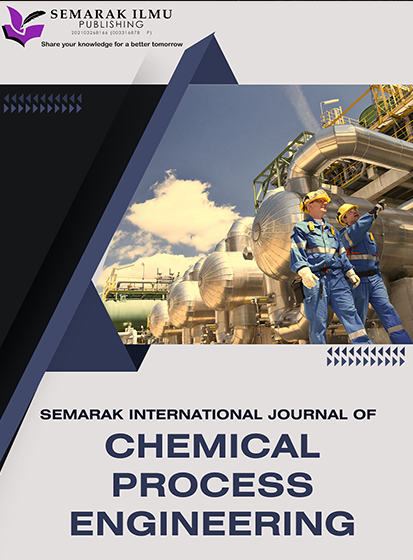Morphological And Chemical Analysis of PAN/a-CNx Composites Membranes For CO₂ Separation
DOI:
https://doi.org/10.37934/sijcpe.1.1.3144Keywords:
Amorphous carbon nitride, polyacrylonitrile, PECVD, NIPS, CO2 separationAbstract
Thin polymeric membranes have attracted significant interest for CO₂ separation due to their high gas permeance and low cost. However, enhancing selectivity often requires an additional selective layer. This study investigates the role of amorphous carbon nitride (a-CNx) thin film deposited via radio-frequency plasma-enhanced chemical vapor deposition (RF-PECVD) as a selective layer on polyacrylonitrile (PAN) membrane fabricated through non-solvent induced phase separation (NIPS). Structural and chemical modifications of the membrane due to the introduction of a-CNx thin film were analyzed using Field Emission Scanning Electron Microscopy (FESEM), Brunauer-Emmett-Teller (BET) analysis, and Fourier-Transform Infrared Spectroscopy (FTIR). FESEM shows a textured surface on PAN/a-CNx membrane which confirmed the successful uniform deposition of the a-CNx thin film. BET revealed a slight reduction in BET surface area from 49.84 m²/g to 48.13 m²/g after deposition due to partial pore coverage by the a-CNx thin film. The Langmuir surface area increased from 89.94 m²/g to 97.08 m²/g, indicating the creation of more uniform adsorption sites. BJH analysis showed an increase in cumulative mesopore volume from 0.0994 cm³/g to 0.1073 cm³/g and a significant rise in mesopore width from 8.57 nm to 13.40 nm which implies the merging of smaller pores that led to increase mesoporosity. Both membranes exhibited Type IV isotherms with H3 hysteresis loops that represent characteristic of mesoporous materials, with the PAN/a-CNx membrane displaying a slightly wider hysteresis loop that indicates potential shifts toward slit-like pores. FTIR spectra confirmed the incorporation of a-CNx thin film into the PAN matrix, with characteristic peaks of N-H stretching, C=N stretching, and aromatic C-N stretching. The increase of nitrogen functionalities by the deposition of a-CNx thin film potentially increases CO₂ adsorption through acid-base interactions with nitrogen sites. These findings offer valuable insights for future research on high-performance gas separation membranes.













